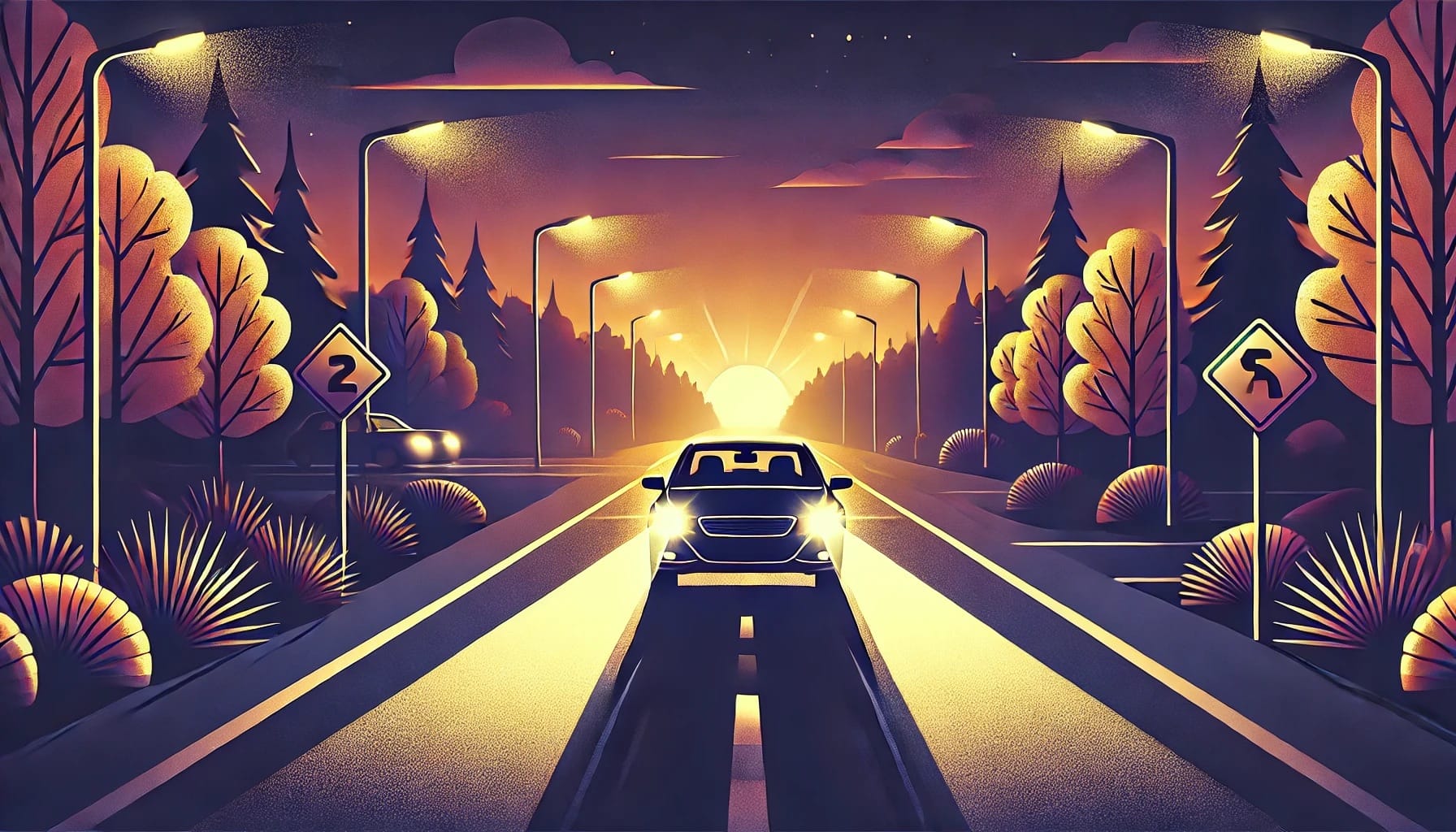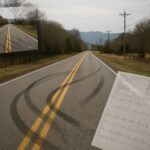As daylight hours shorten and earlier sunsets each day, drivers face unique challenges navigating roads in lower light conditions. In this second article of our “Autumn Hazards on the Road” series, we’ll explore how to stay safe when visibility is compromised and what steps you can take to ensure your vehicle is prepared for evening drives.
The Hazards of Reduced Visibility
Diminished light during earlier sunsets can make it difficult to see obstacles, pedestrians, and other vehicles. It can also lead to increased glare from headlights and streetlights, affecting your ability to drive safely.
How Reduced Visibility Affects Driving
- Increased Reaction Times: With less light, objects in your path become harder to see, giving you less time to react.
- Glare and Eye Strain: The glare from headlights, especially on wet roads, can cause eye strain and make it difficult to focus.
- Pedestrian and Cyclist Safety: People out walking or biking may not be as visible, especially if they are not wearing reflective clothing.
Tips for Driving Safely in Reduced Visibility
1. Use Your Headlights Appropriately
Turn on your headlights at least 30 minutes before sunset and keep them on until 30 minutes after sunrise. This practice not only helps you see the road but also makes you more visible to other drivers. Remember to use your low beams in foggy or misty conditions, as high beams can reflect off the fog and reduce visibility even more.
2. Keep Your Windshield Clean
Dirt and smudges on your windshield can amplify glare from oncoming headlights and streetlights. Clean your windshield regularly, both inside and out, to minimize distractions and maintain a clear view.
3. Slow Down and Increase Following Distance
Reduced visibility means you have less time to react to obstacles or sudden stops. Slowing down gives you more time to make safe decisions. Additionally, increasing your following distance gives you extra room in case the vehicle in front of you suddenly brakes.
4. Adjust Your Mirrors to Reduce Glare
Nighttime glare from headlights can be disorienting. If your vehicle has a manual rearview mirror, adjust it to the “night” or “anti-glare” setting. For side mirrors, angle them so that headlights behind you are less likely to reflect directly into your eyes.
Preparing Your Vehicle for Night Driving
Ensuring that your car is in top condition can make a big difference in your ability to drive safely at night.
1. Check Your Headlights and Taillights
Make sure your headlights, taillights, and brake lights are all functioning correctly. Clean the lenses and replace any dim or burned-out bulbs to maximize brightness. Consider upgrading to brighter halogen or LED bulbs if your headlights seem dim.
2. Inspect Your Windshield Wipers
Rain and mist are more difficult to see through when visibility is already low. Make sure your wipers are in good condition and replace them if they leave streaks on your windshield.
3. Maintain Your Tires
Good tire traction is essential for stopping safely, especially in wet conditions or on slick autumn leaves. Check your tire pressure and tread depth regularly and replace your tires if necessary.
Protecting Pedestrians and Cyclists
With shorter daylight hours, more pedestrians and cyclists are likely to be out in the dark. Here’s how to look out for them:
- Scan the Road and Sidewalks: Look for movement along sidewalks and at crosswalks, and be especially cautious in residential areas.
- Use Extra Caution in School Zones: Even in the evening, children may still be active outdoors.
- Stay Alert in High Pedestrian Areas: Areas near parks, shopping districts, and public transit stops are likely to have more foot traffic.
Adjusting Your Driving Habits
Driving in reduced visibility requires you to be extra vigilant and proactive. Here are some additional tips to help you stay safe:
- Avoid Distractions: Put your phone away, and keep both hands on the wheel.
- Be Aware of Fatigue: Driving in the dark can be tiring. If you feel drowsy, pull over to rest or switch drivers if possible.
- Use Road Markings: Reflective road markings can help guide you when it’s hard to see. Follow the lines and stay centered in your lane.
Conclusion: Stay Safe in the Early Evening Hours
As we transition to earlier sunsets, make sure you’re prepared to handle reduced visibility on the road. By following these tips and staying aware of your surroundings, you can help ensure that your autumn drives are as safe as possible.
Stay tuned for our next article in the “Autumn Hazards on the Road” series, where we’ll discuss how to avoid wildlife encounters, especially with deer during mating season. If you or someone you know has been involved in a car accident, Stillman & Friedland Attorneys are here to assist. Call our Nashville office at 615-244-2111 for a free consultation or reach out through our live chat or online contact form.
Because we care…
Stillman and Friedland







